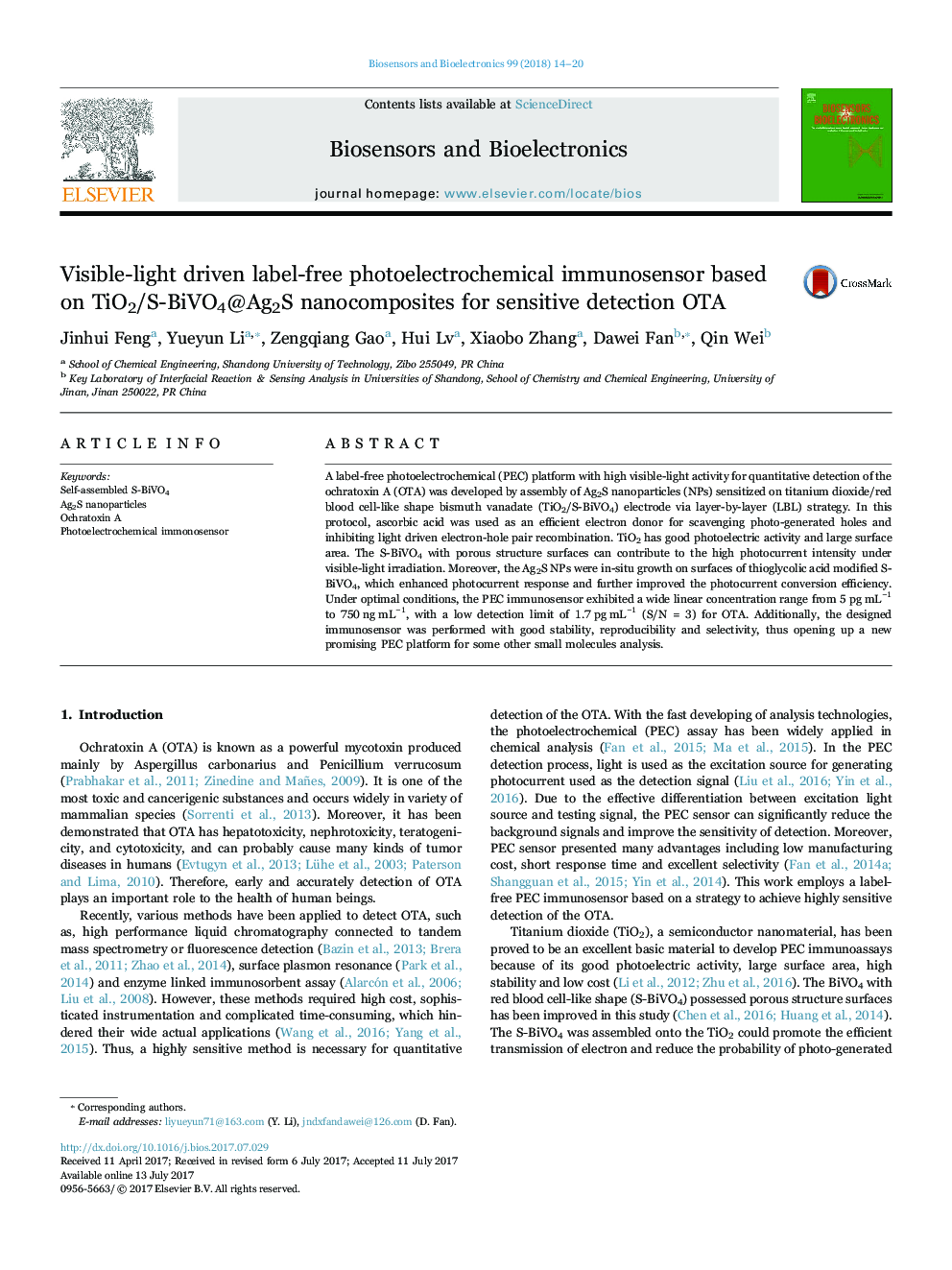| کد مقاله | کد نشریه | سال انتشار | مقاله انگلیسی | نسخه تمام متن |
|---|---|---|---|---|
| 5031306 | 1470933 | 2018 | 7 صفحه PDF | دانلود رایگان |

- The red blood cell-like shape S-BiVO4 was firstly introduced in PEC immunoassay.
- Via the in-situ epitaxial growth, Ag2S NPs were generated on S-BiVO4/TiO2.
- TiO2/S-BiVO4@Ag2S exhibited excellent responses under visible light irradiation.
- The PEC platform showed desired sensitivity and stability for OTA detection.
- The PEC immunosensor exhibited a low detection limit of 1.7 pg mLâ1.
A label-free photoelectrochemical (PEC) platform with high visible-light activity for quantitative detection of the ochratoxin A (OTA) was developed by assembly of Ag2S nanoparticles (NPs) sensitized on titanium dioxide/red blood cell-like shape bismuth vanadate (TiO2/S-BiVO4) electrode via layer-by-layer (LBL) strategy. In this protocol, ascorbic acid was used as an efficient electron donor for scavenging photo-generated holes and inhibiting light driven electron-hole pair recombination. TiO2 has good photoelectric activity and large surface area. The S-BiVO4 with porous structure surfaces can contribute to the high photocurrent intensity under visible-light irradiation. Moreover, the Ag2S NPs were in-situ growth on surfaces of thioglycolic acid modified S-BiVO4, which enhanced photocurrent response and further improved the photocurrent conversion efficiency. Under optimal conditions, the PEC immunosensor exhibited a wide linear concentration range from 5 pg mLâ1 to 750 ng mLâ1, with a low detection limit of 1.7 pg mLâ1 (S/N = 3) for OTA. Additionally, the designed immunosensor was performed with good stability, reproducibility and selectivity, thus opening up a new promising PEC platform for some other small molecules analysis.
Journal: Biosensors and Bioelectronics - Volume 99, 15 January 2018, Pages 14-20